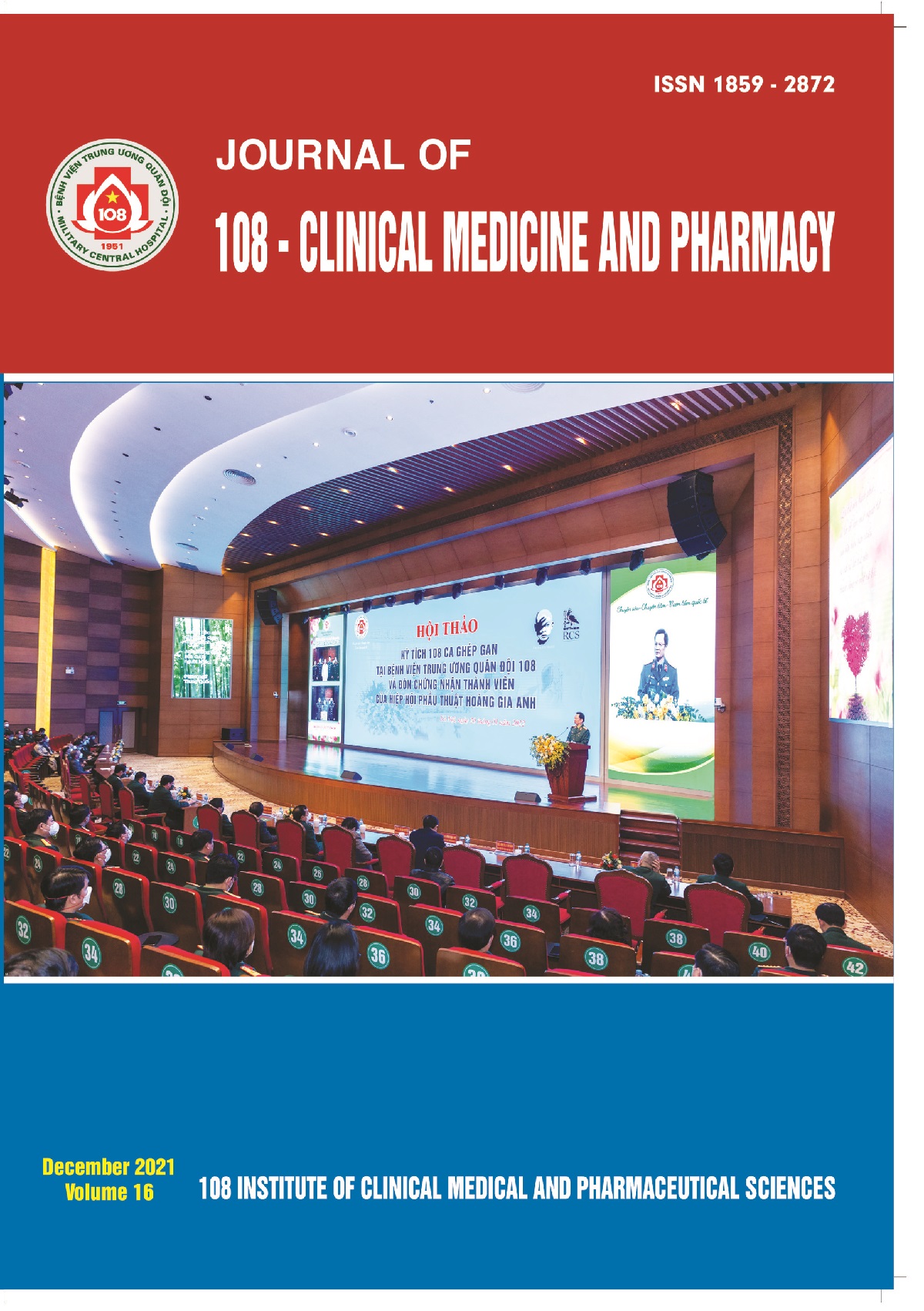Comparison of serum indices results on some biochemical analysers
Main Article Content
Keywords
Abstract
Objective: To identify hemolysis, icterus, lipemia (HIL) indices measurement on four clinical chemistry analyzers: Abbott Architect C8000 (AA), Roche Cobas C501 (RC), Beckman Coulter AU5800 (BC), Siemens Advia 1800 (SA). Subject and method: Plasma of patients were examined at 108 Military Central Hospital (108 MCH) from 12/2020 to 04/2021, comprising of 240ml normal plasma sample, 30ml artificial hemolyzed plasma for H index, 30ml icteric plasma with 360μmol/L total bilirubin, 30ml plasma with 1g/L of Intralipid 20% for lipemia. A cross-sectional study was conducted to compare results of HIL indices on 4 analyzers Abbott Architect C8000 (AA), Roche Cobas c501 (RC), Beckman Coulter AU5800 (BC), Siemens Advia 1800 (SA). Result: The agreement of H index among 4 instruments was good, and values of I index on the AA, SA, RC were absolutely suitable (kappa 0.75 - 1.0). Nevertheless, the comparability between results of I index on the BC and 3 others platforms was mediate (kappa 0.53 - 0.55) while I index on the RC, SA, AA was extremely suitable (kappa 1.0). Even though, the agreement of L index between BC and SA was not acceptable (kappa < 0.2), it was comparable on the remaining analyzers (kappa 0.55 - 0.933). Conclusion: There was comparability of HIL indices among 4 analyzers except L index between the BC and SA. Specifically, the results of all HIL indices on the SA, RC, AA analyzers were high agreement.
Article Details
References
2. McCaughey EJ, Vecellio E, Lake R et al (2016) Current methods of haemolysis detection and reporting as a source of risk to patient safety: A narrative review. The Clinical Biochemist Reviews 37(4): 143.
3. Simundic AM, Nikolac N, Ivankovic V et al (2009) Comparison of visual vs. automated detection of lipemic, icteric and hemolyzed specimens: Can we rely on a human eye?. Clinical chemistry and laboratory medicine 47(11): 1361-1365.
4. Plebani M and Lippi G (2009) Hemolysis index: quality indicator or criterion for sample rejection?. Clinical chemistry and laboratory medicine 47(8): 899-902.
5. Farrell CJL and Carter AC (2016) Serum indices: Managing assay interference. Annals of clinical biochemistry 53(5): 527-538.
6. Lippi G, Cadamuro J, Meyer A et al (2018) Local quality assurance of serum or plasma (HIL) indices. Clinical biochemistry 54: 112–118.
7. McHugh ML (2012) Interrater reliability: The kappa statistic. Biochemia medica 22(3): 276-282.
8. Gabaj NN, Miler M, Vrtarić A et al (2018) Precision, accuracy, cross reactivity and comparability of serum indices measurement on Abbott Architect c8000, Beckman Coulter AU5800 and Roche Cobas 6000 c501 clinical chemistry analyzers. Clinical Chemistry and Laboratory Medicine (CCLM) 56(5): 776-788.
9. Lippi G, Avanzini P Campioli D et al (2013) Systematical assessment of serum indices does not impair efficiency of clinical chemistry testing: A multicenter study. Clinical biochemistry 46(13-14): 1281-1284.
 ISSN: 1859 - 2872
ISSN: 1859 - 2872
